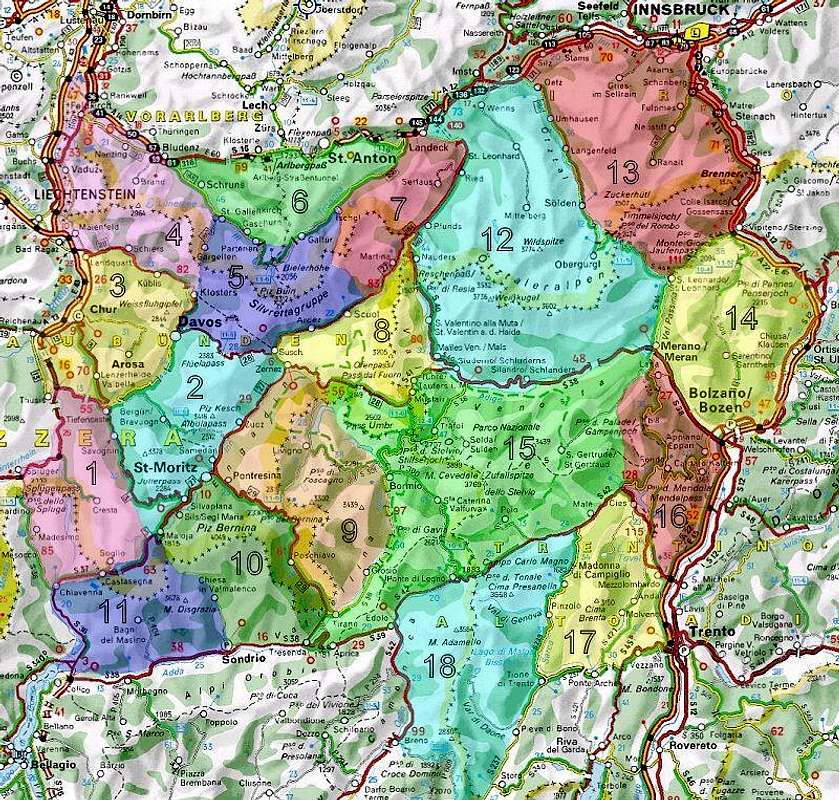Overview
The Rhaetian Alps (Italian name: Alpi Retiche, German name: Rätische Alpen) are a big and complex mountain area in the very centre of the alps. It's name derives from the people of the Raeter that lived here and / or from the province Raetia of the Roman Empire. Today this is the area where Austria, Italy and Switzerland meet. This means a great variety of culture, of landscapes, of mountain formations and of course of alpinistic possibilities. Though here are not the highest mountains of the Alps - the heart of the Alps is beating here.
In Switzerland the term "Raeter" or "Rhaeter" is used as a synonym for the province of Grison (German: Graubuenden) and its most common example is the famous railway company "Rhaetische Bahn".
As a mountain group the term is not common any more in German speaking area – but much more in Italy where it is the central term for naming this area
According to
Marazzi the area can be divided into three sectors: Western, Eastern and Southern Rhaetian Alps and these sectors contain the more or less well-known mountain groups that already have or will have in the future their pages here on SummitPost.
overview map
the following map is interactive: hover your mouse over the group number in the map and the name will appear. Clicking will lead to its section of the page.
![]()
 50934 Hits
50934 Hits
 96.66% Score
96.66% Score
 62 Votes
62 Votes


